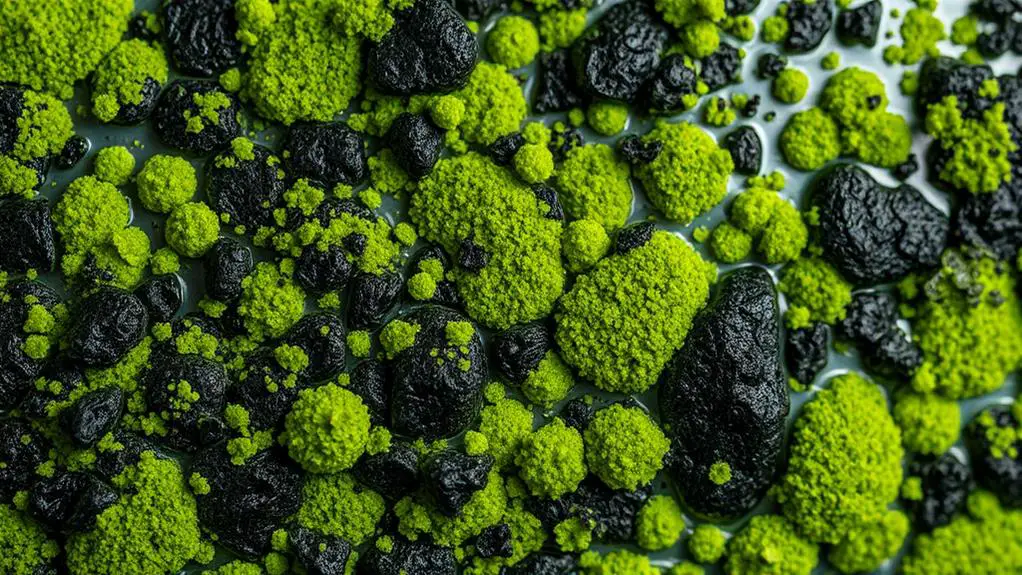You might think plastic is immune to mold, but that's not quite the case. Under the right conditions—like moisture, organic materials, and high humidity—plastic can become a breeding ground for mold. It's surprising how factors like dirty surfaces and specific additives can create a perfect environment for mold spores to thrive. So, what can you do to keep your plastic items mold-free? Understanding the conditions that promote mold growth is the first step, and it leads to some practical strategies you won't want to miss.
Key Takeaways
- Yes, mold can grow on plastic surfaces due to organic materials and moisture present in the environment.
- High humidity and dirt on plastic items create ideal conditions for mold spores to settle and proliferate.
- Porous plastics are more prone to mold growth compared to non-porous plastics, which are easier to clean.
- Regular cleaning with antimicrobial soap and proper drying can help prevent mold formation on plastic surfaces.
- Discard plastic items with deep grooves, visible mold, or significant damage to reduce health risks associated with mold.
Why Mold Grows on Plastic
When it comes to understanding why mold grows on plastic, it's essential to consider a few key factors.
First off, while plastic itself isn't a food source for mold, it often contains additives like plasticizers and cellulose that can serve as organic materials. These additives become a feast for mold when conditions are right.
High humidity levels play a crucial role in mold growth on plastic surfaces. If you've ever noticed mold in a damp area, you likely saw how moisture creates an ideal environment.
Mold spores, which are always present in the air, can settle on your plastic items. If those surfaces are dirty or have food residues, you're looking at a potential mold colony waiting to thrive.
Mold also produces acids that can break down the resin in plastic, further promoting its growth. Although plastic is generally resistant to mold, it's not impervious.
When moisture and organic materials come together, they can create the perfect storm for mold growth. So, keeping your plastic surfaces clean and dry is key to preventing unwanted mold.
Conditions for Mold Growth
Mold thrives under specific conditions, and understanding these can help you keep your plastic items free from unwanted growth. The primary factor influencing mold growth on plastic surfaces is moisture. High humidity levels create an ideal environment for mold to proliferate. Even small amounts of moisture can kickstart the growth process, so moisture control is crucial.
Another key aspect is the presence of organic materials. If your plastic surfaces are contaminated with dust, dirt, or food residues, mold has the perfect food source to flourish. This combination of moisture and organic matter can turn even the most unsuspecting plastic items into a breeding ground for mold.
You should also consider the types of plastic in your home. Porous and rough-textured plastics are more susceptible to mold growth compared to non-porous options, which are generally more resistant.
Regular inspections of your plastic items can help you catch any potential issues early, allowing you to take preventive measures. By maintaining a clean and dry environment, you can significantly reduce the risk of mold growth and keep your plastic surfaces looking their best.
Cleaning Plastic Surfaces
Cleaning plastic surfaces is essential for preventing mold growth and maintaining their appearance. Start by wearing gloves and a mask to shield yourself from mold spores and contaminants. Remove any visible debris from the plastic items before diving into a deeper clean.
Regular maintenance can prevent future yellowing and minimize exposure to environmental pollutants, which common causes of plastic yellowing can exacerbate.
For effective cleaning, use an antimicrobial soap to wash the surfaces. Be sure to scrub all residues thoroughly, then rinse with clean water. If you're tackling stubborn mold or residues, prepare a cleaning solution using either diluted bleach (1 cup of bleach per gallon of water) or undiluted white vinegar.
Just remember, never mix bleach with ammonia, as this creates toxic fumes. Ensure well-ventilated areas when using strong chemical cleaners to prevent inhalation.
Soak your plastic items in your chosen cleaning solution—15 minutes for bleach or 1 hour for vinegar—to effectively kill mold spores. After soaking, rinse the plastic thoroughly to eliminate any remaining cleaning solution.
It's crucial to let them dry completely to prevent future mold growth. With these steps, you'll keep your plastic surfaces clean and mold-free, ensuring they look great and last longer!
When to Discard Plastic Items
Knowing when to discard plastic items is crucial for maintaining a safe and healthy environment. Some plastic items are more prone to mold growth than others, especially if they harbor organic matter or are damaged.
Plastic utensils, such as those made from flexible plastics, can also pose a risk of self-harm if not handled properly Flexible Plastic Utensils. Furthermore, certain types of plastic may contain harmful chemicals, especially recycled materials like black plastic tools, which can exacerbate mold growth.
Here are some key indicators that it's time to replace your plastic items:
- Deep knife grooves in cutting boards can harbor bacteria.
- Food containers showing visible mold should be inspected carefully.
- Cracks and scratches on plastic surfaces make them susceptible to mold growth.
- Outdoor toys should be rinsed and dried to prevent mold accumulation.
- Regularly inspect all plastic items for signs of wear or mold presence.
If you notice deep grooves or cracks, consider discarding those items to avoid health risks. While some food containers can be salvaged, it's essential to ensure they're not excessively aged or damaged.
Remember that mold can grow on plastic surfaces if they're not properly maintained. Regular inspections help you make informed decisions about when to discard plastic items, keeping your home safe and mold-free.
Prioritize cleanliness and safety by staying vigilant about the condition of your plastic belongings!
Antimicrobial Plastic Solutions
Explore the benefits of antimicrobial plastic solutions that can revolutionize how you maintain hygiene in your home or workplace. These specialized plastics come with integrated agents designed to inhibit mold growth and other microbial threats, ensuring cleaner surfaces over time.
By using antimicrobial plastics, you'll notice a significant reduction in the frequency of cleaning required, as they stay cleaner longer than untreated options that easily attract bacteria and mold.
The effectiveness of these antimicrobial solutions is often evaluated using the ASTM G21 antifungal test method, which measures their ability to combat mold growth. This advancement in plastic technology is particularly beneficial in environments where hygiene is paramount, such as medical facilities and food contact applications.
With antimicrobial plastics, you can enjoy enhanced safety and longevity for everyday products while minimizing microbial risks.
Incorporating these innovative materials into your space means you're taking a proactive step towards better hygiene. Whether in your kitchen or workplace, antimicrobial plastics not only keep surfaces cleaner but also provide peace of mind knowing you're protecting your health and those around you.
Frequently Asked Questions
Does Plastic Absorb Mold Spores?
No, plastic doesn't absorb mold spores. Instead, spores settle on its surface. If conditions like moisture and organic matter are right, those spores can grow, but the plastic itself won't support them.
How Do You Keep Mold From Growing on Plastic?
To keep mold from growing on plastic, you need to keep surfaces dry, clean regularly with mild detergent, control humidity with dehumidifiers, and promptly fix any leaks. Choose non-porous materials whenever possible.
Should You Throw Away Plastic With Mold?
If you find mold on plastic, check its condition first. If it's cleanable without deep grooves or cracks, you can salvage it. Otherwise, it's safer to throw it away to avoid health risks.
What Material Will Mold Not Grow On?
Mold won't grow on materials like glass, metal, or certain plastics like HDPE and polycarbonate. These non-porous surfaces resist moisture, making them less inviting for mold. Keep your environment clean to prevent growth!

